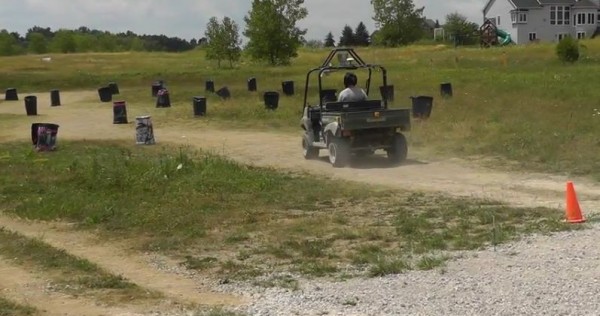So far, researchers were mainly interested in developing self-driving cars. Some prototypes of self-driving cars have also emerged, for example, Google’s Self Driving Car. But a semi-autonomous system was out of the question, until now. Engineers at the Massachusetts Institute of Technology (MIT) have developed a semi-automatic system called “intelligent co-pilot” to keep the drivers safe. The system keeps analyzing potential hazards or collisions from data received through an onboard camera and laser rangefinder while the driver holds the steering wheel. Whenever any possibility of accident arise the system takes the wheel and upon return to a ‘safe-zone’ release the control to the driver.
The system intelligent co-pilot is pretty awesome. When a driver is on the wheel, the ‘intelligent co-pilot’ runs in the background and monitors the road and safe-zones. The system uses onboard camera and laser rangefinder to identify hazards in a vehicle’s path and identify safe zones to avoid accidents or collisions. When the driver is about the leave a safe-zone the system takes the wheel irrespective of the driver’s inputs. It then moves the car back into a safe zone, and as soon as the danger is over, the system allows the driver to control the vehicle again.
The researchers devised an algorithm that integrates human perceptiveness into the system, instead of predefined mapping of individual paths by the system (used in self-driving cars). The system defines safe-zones constraining “obstacle-abutting edges”. This allows to the driver to drive through until he is in danger of crossing a constrained edge or safe-zone.
The engineers have successfully tested the system over 1200 times with over 30 different drivers. The system proved to effective in most cases, though failed to prevent a few collisions. These collisions occurred due to glitches in the vehicle’s camera that failed to identify an obstacle. The system seemed to work better with those who trusted the system than those who didn’t.
The whole research was supported by the United States Army Research Office and the Defense Advanced Research Projects Agency. The experimental platform was developed in collaboration with Quantum Signal LLC with assistance from James Walker, Steven Peters and Sisir Karumanchi.
Source : MIT
Special Thanks To : Design-impact
[ttjad keyword=”gps-device”]



